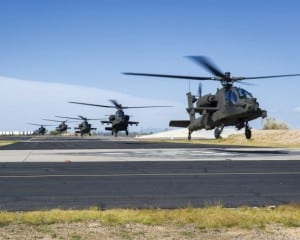
When the Army buys new gear for its helicopters, the acquisition community and industry view it as adding capability to an existing platform, but actually integrating new sensors and weapons often grounds fleets that are in high operational demand.Without government-defined standard architectures, emerging technologies often require extensive rewiring to mount on legacy aircraft, said Maj. Gen. William Gayler, commander of the Army Aviation Center of Excellence (AACE).With an Army aviation branch that is 88 percent committed to ongoing operations, adding…

 By
By 











